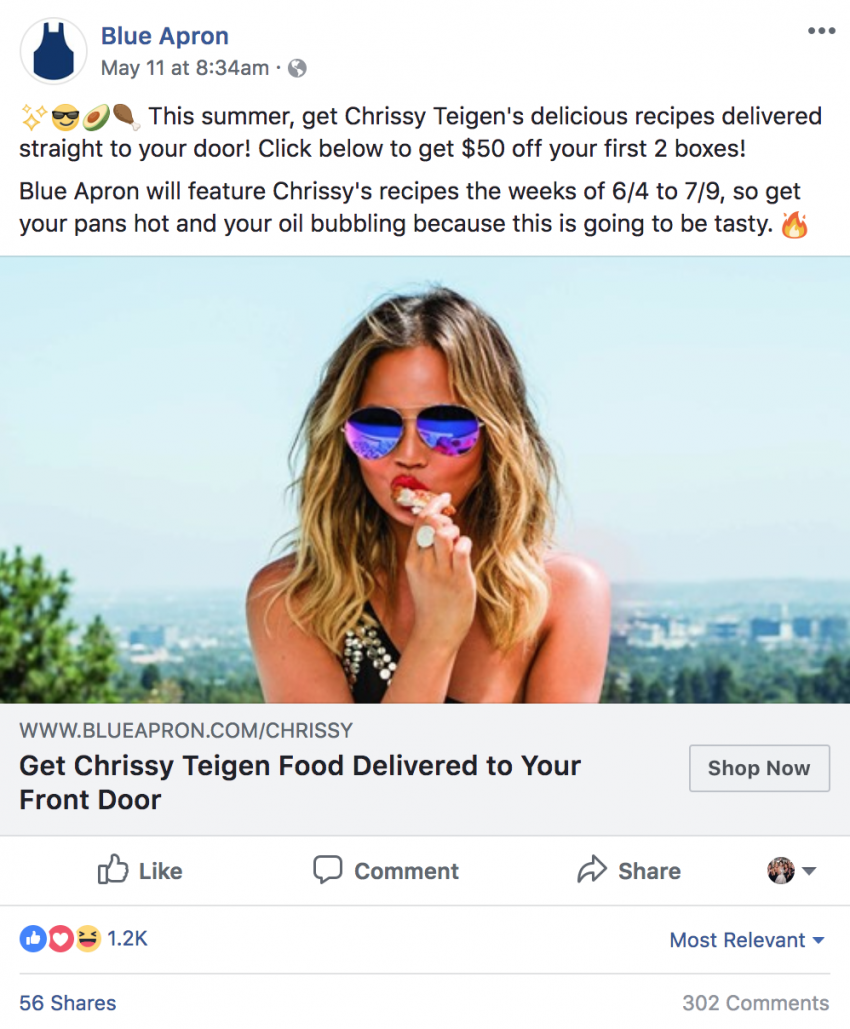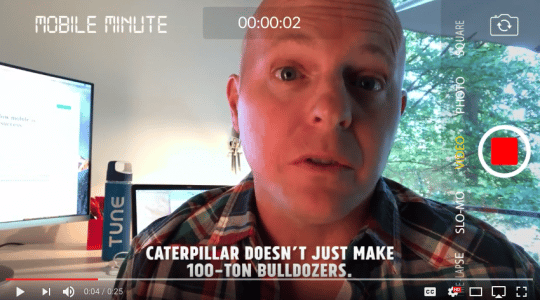
Photo by Anthony Ginsbrook on Unsplash
Influencer marketing on Instagram alone is a $1 billion industry, set to double to $2 billion by 2019. And businesses are expected to allocate even more money to influencer marketing in 2018, according to eMarketer.
It’s particularly impactful for mobile marketers, since influencer shares lend themselves naturally to mobile-first social media brands like Snapchat and Instagram, and customers consume the vast majority of their social media content for brands like Facebook on mobile devices. But in a sea of sponsored posts, how do you find enough blue ocean to stand out?
In this blog post, we’ll lay out the most popular types of influencers and the metrics and goals you can use to ensure the highest ROI, plus top industry trends to follow. (Get it?)
Types of Influencers
Influencers are no longer relegated to Hollywood starlets or bloggers sharing their favorite products. These days, influencers come in all forms, from niche Instagrammers to everyday consumers. Here are a few you might want to consider for your influencer marketing campaign:
Everyday Consumers
Globally, 59% of marketers ranked everyday consumers as being the most effective kind of influencers. You can get everyday consumers to review your products by reminding them (and making it easy to do so) after they purchase. Send them links to leave reviews on Yelp or social media, or send them promo codes they can share with their networks for a cash or product discount.

Photo credit: Blue Apron, facebook.com/blueapron
Celebrities
The benefit of celebrity influencers is that they can reach millions of followers in one post. Companies like Sugarbearhair or Fashion Nova leverage celebrities like the Kardashians to promote their products, paying around $500,000 per Instagram post to access their 100+ million followers.The downside of using a celebrity is that many consumers know or assume they’re doing it merely for the financial incentive, not as a genuine testimonial. With the right approach, you can find celebrities that feel like a natural fit for your brand, such as meal delivery service Blue Apron teaming up with model and cookbook author Chrissy Teigen.
Micro-Influencers
In the same vein as celebrities, micro-influencers represent a rising trend in influencer marketing. Micro-influencers are popular social media stars in their respective industries. In the U.S., these are the marketer’s influencer of choice. Micro-influencers are typically less expensive than celebrity influencers, but can be just as popular (or more) with followers. For example, Glossier, a makeup brand, chooses micro-influencers to work with based on their engagement instead of total follower count.
Bloggers
Bloggers are often considered the original influencers. Globally, 40% of marketers rely on bloggers to spread the word about their brands. Best practices for working with bloggers as influencers have been well documented over the years. Now is the time for innovation. Marketers should consider how to creatively use bloggers to get the most of their influencer marketing partnerships; instead of just writing product reviews, bloggers can also host PR events, do social media posts, coordinate giveaways, and get the word out in other creative ways.
How to Measure Influencer Campaign ROI
At TUNE, we believe that all marketing should be measured on performance. Influencer marketing is no different. Far from a budget black hole, today influencer campaigns are just another part of a solid marketing strategy, with results that can be optimized to deliver maximum ROI.
In general, the goal of your campaign will determine the metrics you use to measure return on investment. To determine the KPIs you should use, set a goal for your campaign and work backward from there.
Here are four we recommend considering:
1. Engagement
Cost-per-engagement can be measured in terms of dollars spent per post like, comment, view, or other social interaction (repins on Pinterest, retweets on Twitter, shares on Facebook, etc.). Consider giving influencers a unique hashtag to track how many people join the conversation and help spread the word. In a 2016 influencer marketing case study, three brands recruited a variety of influencers for promotions during Coachella, and tracked engagement through likes, comments, and hashtags. The case study showed that each campaign was ultimately able to reach tens of millions of people.
2. Revenue
If your main objective is revenue, ensure you have tracking in place to identify exactly how much money your influencer campaigns earn. You can use affiliate links to track online sales tied to influencers. If you want to widen your measurement beyond attribution windows, consider giving influencers promo codes that consumers can redeem any time.
3. Visibility
If your main goal is visibility, consider focusing on a metric like impressions, using an affiliate tracking platform or simple tracking pixels to measure how much traffic came to your site from an influencer campaign. To dig deeper, feed results into a BI solution or reporting dashboard, or ask to see the Google Analytics data behind the impressions to get a feel for location, age range, gender, device, and more.
4. Content
Brands should also factor in content when considering the ROI of email campaigns. It’s typically cheaper to negotiate rights to influencer-created photography and content than it is to arrange an entire photo shoot for your brand. Kim Westwood of the influencer platform Shopping Links reported a higher level of engagement, click-through-to-purchase rate, and average order value on email campaigns that include influencer-generated content instead of purely brand-created content.
Influencer Trends to Watch
As social media and technology evolve, so must influencer marketing to cut through the clutter. Here are a few of the trends we’re seeing in influencer marketing:
The Growth of Video
If it seems like “the growth of video” is on every marketing trends list in 2018, that’s because it is. Video is twice as effective in driving sales as text-based ads across social media, and video ad investments are only expected to increase in 2018. One big reason is video offers more creative freedom and depth than image-based, text-heavy formats. Take the award-winning campaign Nick Offerman did for Lagavulin. In any other format, the execution and idea would fall flat; with video, it was a viral success.
Competition for Real-Time Stories
Instagram launched Stories in 2016 to compete with Snapchat’s characteristic real-time snippets into the daily lives of its users and influencers. Facebook soon followed with its own version of Stories. Most recently, Facebook launched Watch, which allows users to see what’s trending from popular television shows, celebrities, and influencers.
Increased Scrutiny of Disclosures
In 2017, the Federal Trade Commission started to crack down on non-disclosed ads. It was the first year the FTC filed a case against individual influencers for not disclosing paid sponsorship promotions, and sent letters to more than 90 influencers over compliance issues.
Heightened Privacy Measures
Social media brands have been under pressure to update their data sharing and collection practices following GDPR and Facebook’s debacle with Cambridge Analytica. As a result, some influencer sites and services that rely on access to that data have been struggling to adapt.
Building Your Own Influencer Marketing Program
With the right influencers and strategic metrics, influencer marketing can be a lucrative channel to add to your marketing mix.
To learn more about influencer marketing, watch our on-demand webinar, “When Good Advice Pays: Community Influencer Marketing.” Or check out our article on how to rise to the top with a winning influencer marketing strategy.
Author
Becky is the Senior Content Marketing Manager at TUNE. Before TUNE, she handled content strategy and marketing communications at several tech startups in the Bay Area. Becky received her bachelor's degree in English from Wake Forest University. After a decade in San Francisco and Seattle, she has returned home to Charleston, SC, where you can find her strolling through Hampton Park with her pup and enjoying the simple things in life.




Leave a Reply
You must be logged in to post a comment.